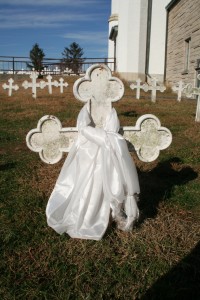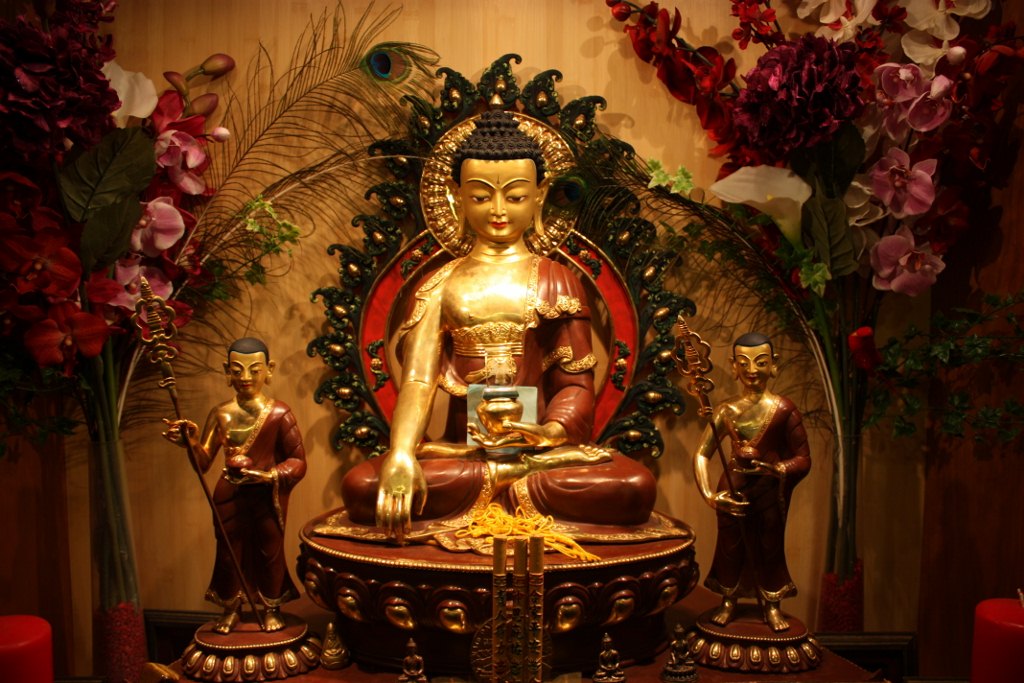
And so we come to the end of our journey with Thomas Merton. If you’re interested in taking a trip to see the Abbey of Gethsemani and the Thomas Merton Center in Louisville, go to A Tour With Thomas Merton, where you’ll find a series of interconnected pages that give practical details of a pilgrimage to Kentucky.
But before we leave Merton behind, let me tell you a little bit about his final resting place. Outside the main church at the Abbey of Gethsemani there is a cemetery where the monks are buried in the order of their death. Merton’s grave is marked “Fr. Louis Merton, Died Dec. 10, 1968.” (If you remember, inside the monastic walls Merton was known as Father Louis.) When I paid my respects there, the only thing that distinguished his grave from the others was a white scarf tied around the cross.
I can’t say for certain what its significance is, but the white scarf on Merton’s grave reminded me of the katas given in the Tibetan Buddhist tradition. These white scarves are given as offerings when one comes before an honored teacher, their color signifying one’s purity of heart and intention. The teacher then gives the scarf back to the student, as a token of blessing and an illustration of the ancient karmic principle that giving and receiving are linked.
I think that scarf is indeed a kata, don’t you?
Merton and the Dalai Lama had three meetings, each deeply meaningful for both men, and the Dalai Lama continues to refer to Merton often in his public speeches. In 1990 he said this, a description that is perhaps one of the best summations of this remarkable man. The most striking thing about Merton, the Dalai Lama said, was “the inner life he manifested. I could see he was a truly humble and deeply spiritual man. This was the first time I had been struck by such a feeling of spirituality in anyone who professed Christianity….It was Merton who introduced me to the real meaning of the word ‘Christian.’”











